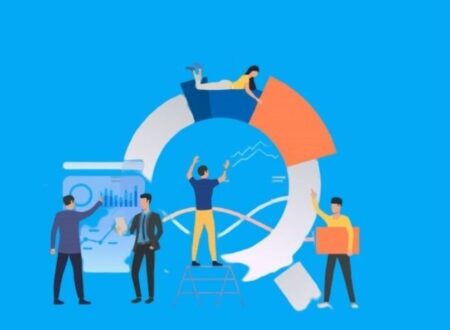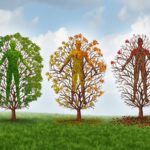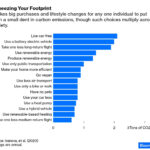New business models often upstage new products and services, helping companies get to the front of the pack because they know how to motivate clients to buy what they are selling. In this look at new business models that are finding firm footing here in the third decade of the 21st century, I have taken the words of Peter Diamandis with a little of my own input to describe these models and why they are effective.
Some of the most potent innovation taking place today doesn’t involve breakthrough technologies but rather new business models. For most of the 20th century, business models have remained remarkably consistent with very few variations.
In the 1920s, companies used a model known as “bait and hook,” with customers lured to acquire a low-cost product like a free razor but then have to buy blade refills. In the 1950s, the “franchise model” was pioneered by McDonald’s. Or in the 1960s we got “hypermarkets” like Walmart. And then the Internet came along in the 1990s, and businesses reinvented themselves for the online world. Now we are seeing the birth of digital currencies and the disruption of the banking business model with Bitcoin and the blockchain undercut existing “trusted third party” financial models. At the same time, we have witnessed the development of crowdfunding upending the traditional ways new startups raise capital.
Today, while countless businesses continue to be anchored to succeeding solely through better execution, there are seven business models they need to consider if they want to succeed throughout the 2020s.
Seven Business Models for the 2020s
1. The Crowd Economy
Crowdsourcing, crowdfunding, leveraged assets, and staff-on-demand are developments that leverage the billions of people already online and the billions coming online.
These models have revolutionized the way we do business. Just consider leveraged assets, like Uber’s vehicles and Airbnb’s rooms, which allow companies to scale at speed. These crowd economy models also use staff-on-demand, which provides them with the agility needed to adapt to rapidly changing environments. These models work for everything from micro-task labourers behind Amazon’s Mechanical Turk to Kaggle’s data scientist-on-demand services.
How successful are they? Today Airbnb is the largest “hotel chain” in the world, yet it doesn’t own a single hotel. Instead, it leverages the assets of the crowd making more than 7 million rooms, flats, and houses in over 100,000 cities across the globe available to its customers.
2. The Free/Data Economy
This is the platform version of “bait and hook,” essentially baiting customers with free access to cool services and then making money from the data gathered on these customers.
How successful is this model? Facebook, Google, and Twitter have become global superpowers. Google’s search queries per day have risen from 500,000 in 1999, to 200 million in 2004, to 3 billion in 2011, to 5.6 billion today. More users are becoming aware of the valuable data they exchange in return for Google’s “free” search service which will mean this model will continue to enjoy success throughout the 2020s.
3. The Smartness Economy
In the late 1800s, a good idea for a new business was to take an existing tool and electrify it. Think of a power drill or a washing machine. In the decade of the 2020s, artificial intelligence (AI) is the equivalent of that electricity. For example, adding intelligence to cellphones turned them into smartphones. And adding intelligence to automobiles made them more autonomous.
Today more AI startups are coming on the market daily. In 2020, 1,000 AI-U.S.-related companies raised over $27 billion in venture capital. One of the most highly valued is Scale AI, a data-labelling company that supports machine learning teams. It currently is valued at $7.3 billion.
4. The Closed-Loop Economy
In nature, nothing is ever wasted. The detritus of one species becomes the foundation for the survival of another. Human attempts to create entirely waste-free systems have spawned the field of business biomimicry. It can be applied to products or to entire urban ecosystems. We often hear of the circular economy. What we are talking about is a closed-loop system such as The Plastic Bank, which was founded in 2013. It allows anyone to pick up waste plastic and drop it off at a “plastic bank.” The collector gets paid for the trash either with cash or a service such as extra WiFi time. The Plastic Bank sorts the material collected and sells it to recyclers, closing an open loop in the plastic product life cycle.
5. Decentralized Autonomous Organization (DAO) Economy
At the convergence of blockchain and AI sits a radically new kind of company, one with no employees, no bosses, and nonstop production. A set of preprogrammed rules determines how the company operates, and computers do the rest. A fleet of autonomous taxis, for instance, with a blockchain-backed smart contracts layer, can run 24-7 without any human involvement. Take for example the platform DAOstack which is working to provide the tools for these types of businesses including reliable crypto-economic incentives and decentralized governance protocols. DAOstack aims to create businesses where the external influence is solely that of the customer.
6. Multiple World Economy
We no longer live in just a physical place. Our presence extends to the Internet and the Cloud. Today we have an online persona and its existence is only going to increase over time. The rise of Augmented Reality and Virtual Reality is introducing more complexity into our existence with the ability to create avatars for work and play, and multiple versions of ourselves leading to new business opportunities.
What are examples of multiple world economies? Second Life was the very first “virtual world” created in 2003 and it gave rise to a multimillion-dollar economy. People were paying other people to design digital clothes and houses for digital avatars. Every time we add a new layer to the digital strata, we add an entire economy built on that layer, meaning we are now conducting business in multiple worlds at once. Today we are mastering Zoom. Tomorrow we’ll be diving into the SpatialWeb, moving back and forth between multiple virtual worlds and our physical reality, and using technologies such as Vatoms and Spatialweb.net to navigate what is now being called the Metaverse.
7. Transformation Economy
The Experience Economy was about the sharing of experiences. A good example is Starbucks which started as a coffee franchise and became a “third place,” neither home nor work, but a destination in which to live part of your life. Buying a cup of coffee turned into an experience, a caffeinated theme park of sorts. The next iteration of the Starbucks model is its evolution to the Transformation Economy, where you’re not just paying for an experience, you’re paying to have your life transformed by it.
What are some examples? Early versions of this model can be seen in the rise of “transformational festivals” like Burning Man, or fitness companies like CrossFit, or Peloton, where the experience is generally bad (With CrossFit you work out in old warehouses. With Peloton you buy expensive home gym equipment), but the transformation is great (the person you become after three months of working out either in the CrossFit warehouse or as a Peloton member guided by an online coach is good). Consumers are no longer searching for merely pleasurable experiences—they are looking for challenges that transform. This is also where technologies like Spatialweb.net and Dreamscape help to facilitate the experience.
Final Thoughts
What this tells us is that business as usual is becoming business unusual. For existing companies, as Harvard’s Clayton Christensen explains, “Most [organizations] think the key to growth is developing new technologies and products. But often this is not so. To unlock the next wave of growth, companies must embed these innovations in a disruptive new business model.” So if you are in business in 2021, hang on to your hat because these new business models are creating an accelerated climate of change with no danger of slowing down.
















